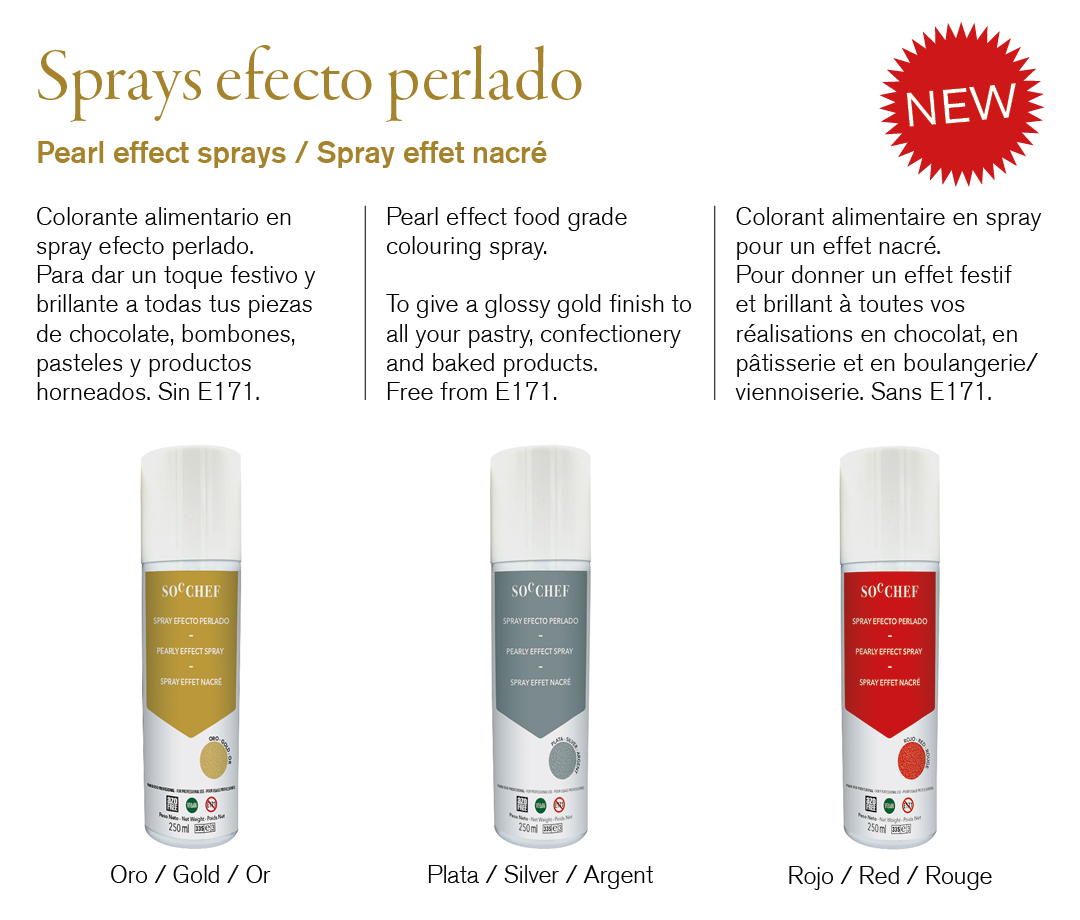SPHERIFICATION TEXTURES
Spherification
It consists of a controlled jellification of a liquid, once submerged in a specific bath, liquid turns into spheres.
We obtain this effect thanks to the reaction of the Alginate, jellying agent made of seaweed, with a rich solution in calcium.
What is spherification?
We’ve all heard the term spherification at some point in reference to the creations of great chefs and complex haute cuisine dishes. This section examines this molecular cuisine technique and describes how to do it.
Spherification is a culinary technique patented in 1946. However, it wasn’t used in haute cuisine until the 1990s.
Spherification consists of taking a liquid, adding an alga (alginate) and making it react in a calcium salt bath. The technique is called spherification because the end result is a sphere with a film of gelatine on the outside and liquid on the inside. This technique was the result of trying to imitate the spherical form and texture of caviar or fish roe.
The soft outside texture with liquid inside creates a curious and pleasant mouthfeel. Spherification is also a very versatile technique as it can be used for virtually any sweet or salty liquid. This is one of the reasons why this technique is very popular in the creations of the finest restaurants.
Types of spherification
Direct spherification
This is done by mixing the product with alginate and bathing or dipping it in calcium. This process creates a gelatine membrane that forms a sphere. Spheres made with this method should be served soon after being made, since the alginate will continue to gel inside the product.
It is important to note that this type of spherification will not work if the main product contains calcium, as it will be very difficult or impossible to mix the ingredients and form balls.
How can I do direct spherification?
- In a bowl, mix the alginate with your main ingredient using a blender.
- In another bowl, mix 5 g of calcium per litre of bottled water.
- Let the mixture rest for 4 hours to eliminate any air.
- Add the main ingredient to the calcium bath with a pipette or a spoon.
- Once you’ve formed a sphere, remove it from the calcium bath and rinse it with water.
- Plate and serve within 15 minutes.
The longer the main ingredient is in the calcium bath, the firmer the ball becomes and the less liquid it has.
For spherification to have a good outcome, the pH of the base you want to spherify must be between 5 and 7. To correct pH in direct spherification, add calcium citrate.
Mango direct spherification video
Reverse spherification
Unlike direct spherification, this technique produces spheres that do not continue to gel after they’re removed from the bath, so the spheres will not harden completely. This technique can also be used with ingredients that contain calcium. In this case, the main ingredient (which already contains calcium), is placed into the alginate solution or bath. If the main ingredient has low levels of calcium, you should add gluconolactate.
How can I do reverse spherification?
- In a bowl, mix 5 g of alginate per litre of bottled water with low-calcium water (3 mg/l) using a blender.
- Let the mixture rest for 4 hours to remove the air.
- Add the main ingredient to the calcium bath with a pipette or a spoon. Submerge it in the bath for 30 seconds to 3 minutes depending on the size of the spheres you want to make.
- Rinse the spheres in bottled water to complete the process.
- Serve immediately or place in the refrigerator. Do not freeze the spheres.
Culinary spheres should be kept in the same liquid as the liquid of the main ingredient to prevent the flavour from transferring to the inside of the sphere.
Yogurt spherification video
Agar spherification
This technique has a result similar to direct and reverse spherification, but in this case, the outer film is made with agar agar.
How can I do agar spherification?
Do not freeze agar spheres.
Ingredients required for spherification
Our SOC CHEF table explains the key ingredients you’ll need for spherification, as well as their dosages, applications and uses.
Where can I buy spherification agents?
The ingredients you’ll need are readily available in any specialised shop. SOC CHEF also offers the best texturising agents for professional spherification.
Will I need another type of texturising agent?
The SOC CHEF brand offers acidulating, bulking and emulsifying texturising agents as well as pearls and ready-to-use spherified products.






